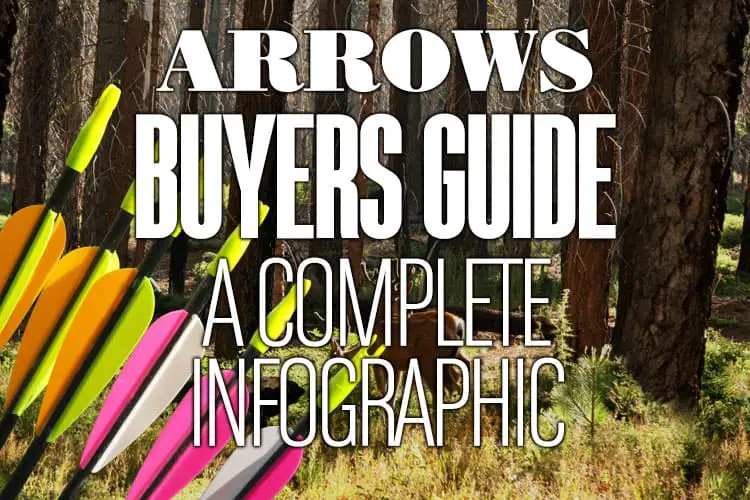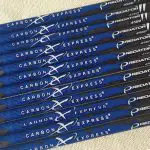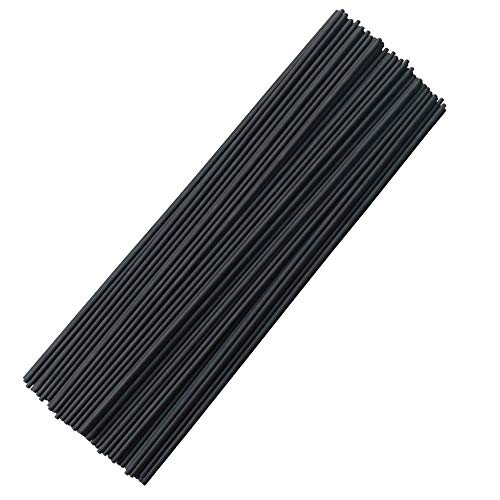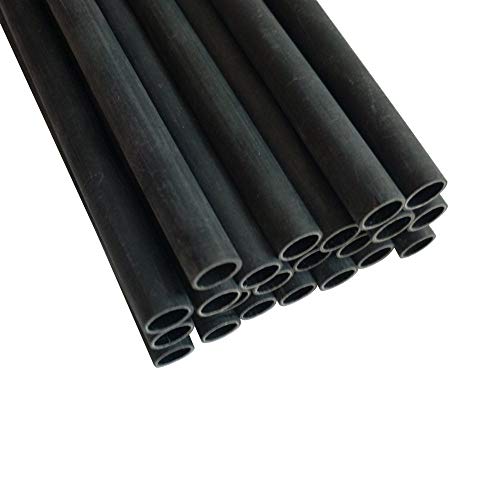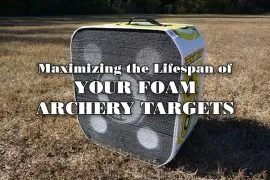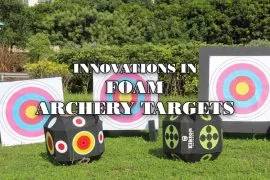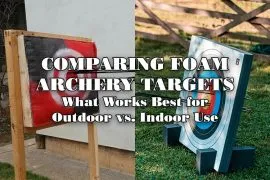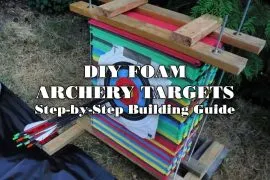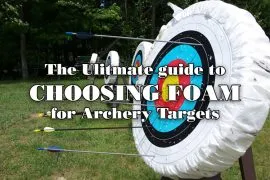[Updated 1 January 2024] Depending on your bow setup, and whether you compete in 300 or 3-D tournaments or just hunt for whitetails in the Back Forty, finding the arrow that is right for you can be a daunting task. This arrows buyer’s guide will help you understand the differences between the main types of arrows and the fletching that go along with them.
Aluminum
Table of Contents

Aluminum is the most popular arrow shaft material since the 1970s and still the most commonly used material today.
Advantages:
- Inexpensive production
- Strong constructional integrity
- Can rebound Rebounding from minor bending
- Weather and humidity resistance
- Extreme straightness
Disadvantages:
- Heavier than carbon
- Difficult to modify
- It can be affected by temperature changes
- It can vibrate more upon release
Carbon
Early carbon shafts were lightweight and pultruded with an extremely small diameter. These shafts did produce a lighter arrow but were prone to splitting upon impact and difficult to tune. However, these shafts have changed considerably. Nowadays, shafts are either weaved or wrapped, making them stronger and less prone to splitting than earlier versions.
Advantages:
- Speed factor
- Lighter in weight, archers are able to gain many feet per second
- Extremely durable
- Straight, and capable of transferring energy well
- Lower price
Disadvantages:
- Not as durable as aluminum
- It can be affected by temperature changes
- Requires more maintenance
Aluminum/Carbon Hybrids
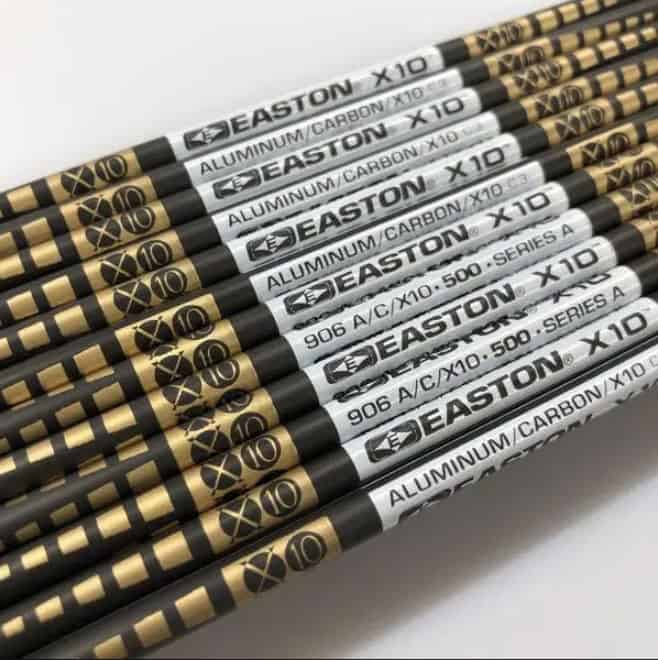
While not nearly as common as either aluminum or carbon alone, aluminum/carbon hybrids offer a unique arrow shaft design and have become extremely popular among archers in recent years. Aluminum/carbon hybrids are typically constructed using a small-diameter, lightweight aluminum shaft, covered with a wrapped carbon outer layer. However, with the introduction of the Easton Full Metal Jacket, the construction has been turned inside out, literally.
Advantages:
- For their stiffness, they are very lightweight
- Efficiently absorb and transfer energy
- Penetrates well due to their relatively small diameter
- Very straight and are durable
- Easy arrow removal from targets
Disadvantage:
- Cost
Wood

Wood shafts have been around the longest. Today the vast majority of wood arrows are primarily used by recurve and longbow shooters Traditionally, wood shafts were most commonly made from Port Orford cedar, which is still the most desired material used today.
Advantages:
- Inexpensive
- Reasonably accurate
- Heavy enough to penetrate well even the largest big-game animals
- Reasonably durable
Disadvantages:
- It can bend and take a set
- They can also warp when subjected to temperature and/or moisture extremes
- They can split upon firing when used with modern, high-velocity compound bows
Fletching Vanes
 Plastic vanes are the most common fletching material. Vanes are also available in a plethora of lengths and styles to suit any need from ultrasmall target styles to high-profile, long, hunting versions.
Plastic vanes are the most common fletching material. Vanes are also available in a plethora of lengths and styles to suit any need from ultrasmall target styles to high-profile, long, hunting versions.
Advantages:
- Durable
- Unaffected by moisture
- Resilient to bending and crumbling
- Effectively stabilize a wide range of arrows
Disadvantages:
- Slightly heavier
- Does not offer as much wind resistance as feathers
- Less forgiving when obstructions are hit
Feathers
 While this type of fletch is the oldest, it is still commonly used today and considered a favorite for traditional archers.
While this type of fletch is the oldest, it is still commonly used today and considered a favorite for traditional archers.
Advantages:
- Faster than vanes during flight and provide the most “drag” or stabilization for an arrow for a given size of fletch
- Feathers are more forgiving when an obstruction is hit upon release
- Feathers will collapse and pass by the obstruction while plastic vanes will throw the arrow slightly off course
Disadvantages:
- Feathers are not durable
- Affected by wet conditions
- Can be slightly noisier in flight
There are several different shaft materials that may work for your individual needs. After deciding what type of shaft material you desire and the proper type of fletching to use, simply select the correct shaft for your draw weight and length to find the perfectly balanced arrow for your setup.
Frequently Asked Questions(FAQs)
What is the difference between fiberglass and carbon arrows?
Fiberglass arrows are pretty durable, but they’re also heavy compared to carbon arrows. Fiberglass arrows are excellent for short-distance target practice, but their performance is significantly reduced for longer target distances.
What does 400 mean on an arrow?
The numbers refer to the arrow’s spine. The stiffness of a 400 spine arrow ranges from 40 to 60 pounds.
How much does a dozen arrows cost?
Around $40-$200 per dozen, depending on the brand and type of arrow.
What are the different types of arrows?
Different arrows are based on materials, weight, and length, including wood, carbon, aluminum, and hybrid arrows.
How do I choose the correct arrow length?
The right arrow length depends on the draw length of your bow, which can be measured at a pro shop or using a tool such as a T-Square.
How do I determine the appropriate weight for my arrow?
When deciding the right weight for an arrow, numerous aspects, like your bow’s draw weight, shooting style, and even what type of game you’re hunting, must be considered.
What is fletching, and why are they important?
Fletching is the feathers or vanes on the back of the arrow that provide stability and steer the arrow toward its target. They are essential for accuracy and consistency in the shooting.
Can I use any arrow with my bow?
No, not all arrows are compatible with all bows. It’s essential to select indicators that match the specifications of your bow, such as draw weight, draw length, and arrow rest.
Conclusion
In conclusion, choosing the right arrow is essential in archery and can significantly impact your accuracy and performance. When selecting the appropriate arrow for your needs, multiple factors must be considered, including material, length, weight, and fletching. It is crucial to consider your bow specifications, shooting style, and intended use before purchasing. With proper research and consideration, you can select the right arrow to help you achieve your goals in archery.
Want to use this infographic on your site?

